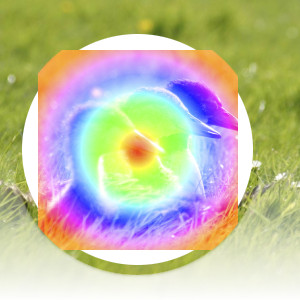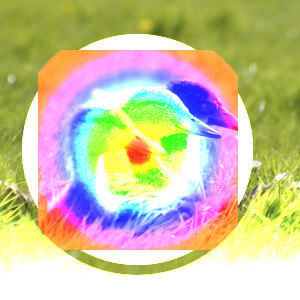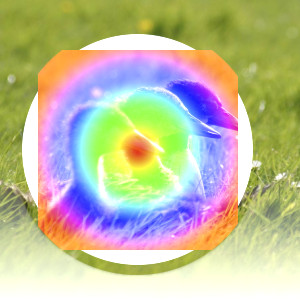| 2.2. Aclarar los modos de capa | ||
|---|---|---|

|
2. Modos de capa |  |
El grupo “Aclarar” contiene modos de capa que aclaran el resultado.
Figura 8.15. Ejemplo para el modo de capa “Solo aclarar”

Capa superior al 100% de opacidad usando el modo “Sólo aclarar”.
El modo compara cada componente de cada píxel en la capa superior con el correspondiente de la capa inferior y usa el valor más grande en la imagen resultante. Las capas completamente negras no tienen efecto sobre la imagen final y las completamente blancas dan una imagen blanca.
El modo es conmutativo. El orden de las dos capas no influye (excepto para áreas transparentes en la capa inferior).
Figura 8.16. Ejemplo del modo de capa “Aclarar sólo la luma/luminancia”

Capa superior con 100% de opacidad usando el modo “Luma/Luminancia Sólo aclarar”.
El modo compara la luminancia de cada píxel en la capa superior con la correspondiente de la capa inferior y usa el valor más grande en la imagen resultante. Las capas completamente negras no tienen efecto sobre la imagen final y las completamente blancas dan una imagen blanca. La luma es la versión perceptiva de la luminancia.
El modo es conmutativo. El orden de las dos capas no influye (excepto para áreas transparentes en la capa inferior).
Figura 8.17. Ejemplo para el modo de capa “Pantalla”

Capa superior al 100% de opacidad usando el modo “Pantalla”.
El modo Pantalla invierte los valores de cada uno de los píxeles visibles en las dos capas de la imagen. (Es decir, resta cada uno de ellos de 1,0). Luego los multiplica y vuelve a invertir este valor. La imagen resultante suele ser más brillante y, a veces, de apariencia “descolorida”. Las excepciones a esto son una capa negra, que no cambia la otra capa, y una capa blanca, que da como resultado una imagen blanca. Los colores más oscuros de la imagen parecen más transparentes.
El modo es conmutativo: el orden de las capas no influye.
Figura 8.18. Ejemplo para el modo de capa “Blanquear”

Capa superior con 100% de opacidad usando el modo “Blanquear”.
El modo Blanquear divide el valor de píxel de la capa inferior por el inverso del valor de píxel de la capa superior. La imagen resultante es normalmente más clara, pero algunos colores podrían invertirse.
En fotografía, blanquear es una técnica que se usa en el cuarto oscuro para incrementar la exposición en áreas particulares de la imagen. Esto hace que aparezcan detalles en las sombras. Cuando se usa para este propósito, puede funcionar mejor trabajar en imágenes en escala de grises y utilizando una herramienta de pintura, en lugar de con el modo de capa.
Figura 8.19. Ejemplo para el modo de capa “Suma”

Capa superior al 100% de opacidad usando el modo “Suma”.
El modo Suma es muy simple. Los valores de píxel de las capas superior e inferior se suman. La imagen resultante es generalmente más clara. La ecuación puede dar valores de color superiores a 1,0.
El modo es conmutativo: el orden de las capas no influye.